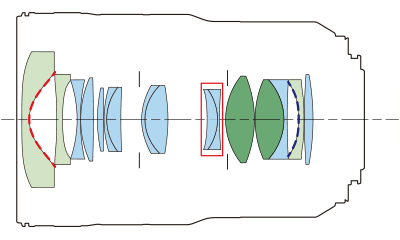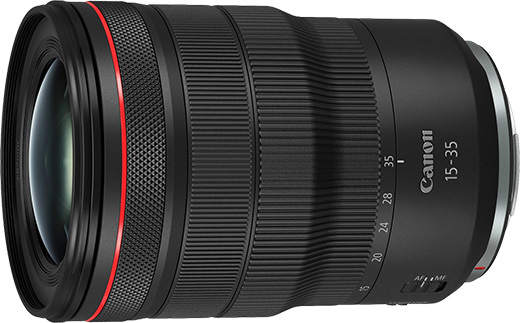- Specifications
- Block diagram
| Marketed | September 2019 |
| Original Price | Open price |
| Lens Construction (group) | 12 |
| Lens Construction (element) | 16 |
| No. of Diaphragm Blades | 9 (circular aperture) |
| Minimum Aperture | 22 |
| Closest Focusing Distance (m) | 0.28 |
| Maximum Magnification (x) | 0.21 (at 35mm) |
| Filter Diameter (mm) | 82 |
| Maximum Diameter x Length (mm) | Approx. 88.5×126.8 |
| Weight (g) | Approx. 840 |
Taking advantage of the characteristics of the RF mount—a large internal mount diameter and a short back focus1—this lens achieves overwhelmingly high image quality from the center of the image field to the peripheral areas. What’s more, newly featuring image stabilization equivalent to approximately five shutter speed stops2 and Canon’s proprietary Nano Ultra-Sonic Motor (USM), the lens makes possible comfortable shooting of stills and video.
The RF15–35mm F2.8 L IS USM achieves a maximum f/2.8 aperture throughout its focal length range. The lens realizes an angel of view 1 mm wider at the wide end than the EF16–35mm f/2.8 L IS USM (released in October 2016), allowing subjects to be captured without users having to step farther back advance when shooting such subjects as architecture and landscapes, and enabling photographic expression with an enhanced sense of perspective. Additionally, featuring an optical design that incorporates 16 elements in 12 groups, including three glass molded aspherical lenses and three UD (Ultra Low Dispersion) lenses, the RF15–35mm F2.8 L IS USM mitigates various aberrations that result in image degradation, to achieve high image quality across the entire zoom range.
1 A short distance between the optical axis from the vertex of the rear lens element to the imaging plane when focused to infinity.
2 When used with the EOS R at a focal length of 35 mm. Based on CIPA standards.

Aspherical lens UD lenses IS unit
SWC ASC


